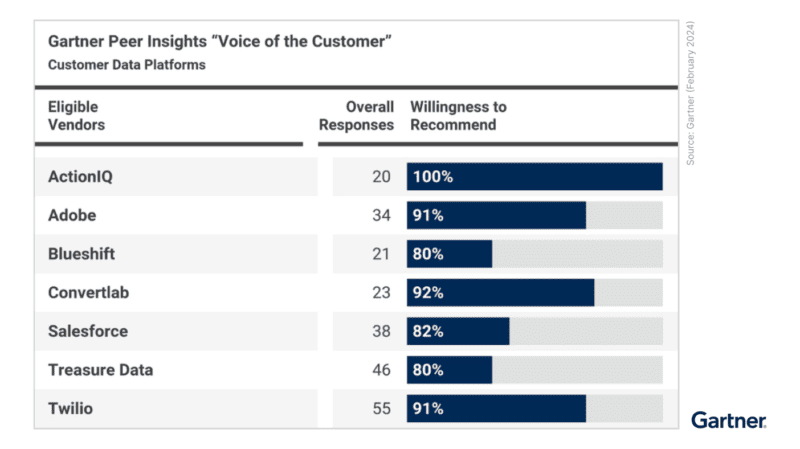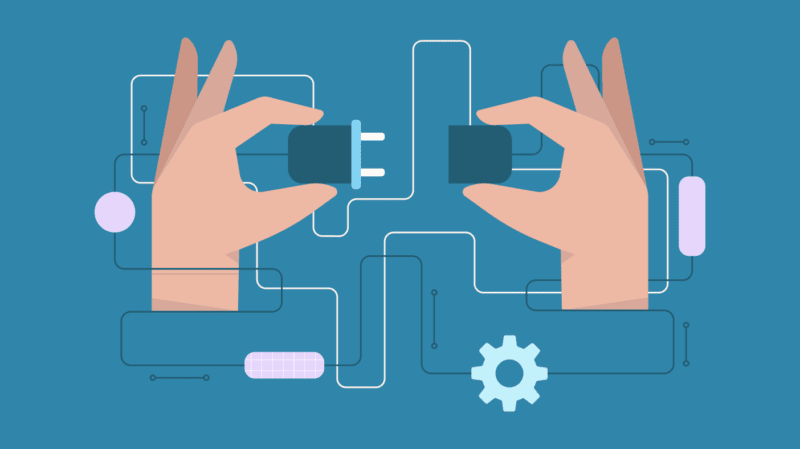Top 10 Customer Data Platform Myths Brands Need to Bust

Technology that helps brands unify, analyze and activate customer data is business-critical — so is it any wonder that 89% of companies have either already deployed or plan to deploy a customer data platform (CDP)?
Hoping to capitalize on high demand, many vendors are slapping a “CDP” sticker on their technologies. In fact, 20 new vendors entered the CDP space during the first half of 2021 alone — a mixture of brand new startups and companies that claim to have added CDP capabilities to their existing products.
The result? The CDP landscape is more crowded and confusing than ever.
While CDPs have gone from emerging technology to a must-have tool in recent years, many brands may still have misconceptions about what they do, how they work and the best ways to integrate them into their current marketing technology stacks.
To make sure your CDP decision isn’t made in vain, start by separating fact from fiction.
Here are the top 10 customer data platform myths — and the truth behind each one.
Check out the video below to learn more about the ins and outs of CDPs:
Top 10 Customer Data Platform Myths Brands Need to Bust
CDP Myth #1: All CDPs Are Created Equal
Any CDP worth its salt will have some capabilities for data unification, data analysis and data activation. Because of the minor overlap you may find between different solutions, it’s easy to understand why some brands think CDPs are essentially all the same.
But CDPs come in all shapes and sizes (see our CDP market guide) — and some are much more valuable for enterprise brands than others.
Truth
Every category of CDP is built primarily to either consolidate customer data, extract insights from customer data or personalize experiences with customer data. The main focus will tell you a lot about who the end users are intended to be: IT, analytics or business teams.
Evaluate your options based on the core outcomes you want to achieve — and the capabilities necessary to drive them —as well as the users you want to empower.
CDP Myth #2: CDPs Are Just for Creating a Customer 360
The ability to create a single view of the customer is one of the biggest CDP benefits — leading some brands to believe that’s all they’re meant for.
But to resolve operational bottlenecks, overcome technical challenges and enable brands to become truly customer-centric, CDPs must do much more than provide a 360-degree view of customers.
Truth
There’s no inherent value in collecting and unifying data. Actually putting your data to work — so you can more effectively drive revenue and grow your customer base — is what makes a CDP worthwhile.
Enterprise-grade CDPs should provide analytics that will help you predict customer behaviors and orchestration capabilities that enable you to develop both real-time customer experiences and multi-step, connected customer journeys.
Discover the different benefits of CDPs in the video below:
CDP Myth #3: CDPs Are Only Used by IT Teams
Certain types of CDPs are geared more toward technical users, but contrary to what some may believe, the value of a CDP is in how it helps everyday business users take action on customer data.
In fact, one of the most common pain points brands are trying to resolve when implementing a CDP is overreliance on IT. Burdening IT professionals with endless ad hoc requests leads to operational bottlenecks and diverts technical teams away from higher-impact projects.
Truth
Your CDP should have a business-friendly interface that will help non-technical users access, analyze and activate customer data. That’s not to say IT shouldn’t play an essential role — to maximize the value of a CDP, marketing, data and IT must all work together to ensure everyone is aligned on desired business outcomes and strategic responsibilities.
CDP Myth #4: You Don’t Need a CDP if You Have an EDW
Already have an enterprise data warehouse (EDW), data lake or big data platform?
If so, you may think investing in a CDP is unnecessary. But these technologies aren’t built to deliver better customer experiences — they help power the CDPs that do.
Truth
EDWs, data lakes and big data platforms store enterprise data to support analytics and data science. The data within them is only accessible if you have knowledge of certain programming languages, such as SQL, Python and Java.
By transmitting data from them to your CDP, you can create a customer 360, develop predictive models and fuel the omnichannel brain that helps you personalize customer experiences across online and offline touchpoints.
Watch the video below to see how Condé Nast empowers business users with its CDP:
CDP Myth #5: CDPs and CRMs Provide the Same Benefits
The mistaken belief that customer relationship management (CRM) tools accomplish the same thing as CDPs is especially prevalent among business-to-business (B2B) brands, as they’ve long relied on them to help support more complex sales cycles.
Let’s consider the difference between CDPs and CRMs: CRMs collect and manage customer data for sales teams to personalize outreach throughout the buyer journey, while CDPs provide a comprehensive view of customers across all channels in real time.
Since CRMs are only focused on sales-focused data — and are only able to handle a limited volume of data — they provide a sliver of a customer’s history with your brand versus the full picture. That explains why nearly 50% of B2B marketers are now investing in CDPs.
Truth
Using CDPs and CRMs isn’t a one-or-the-other choice — these technologies should work together. CRM data can be used to enrich customer profiles within your CDP, which ensures every team is able to access the data it needs to provide tailored and highly relevant CX.
CDP Myth #6: Building a CDP is Better Than Buying One
Some brands may believe building a CDP will be cheaper than buying one. Or perhaps they’re very protective of their data assets and are skeptical of working with outside parties. Or maybe they just don’t believe a third-party solution will fit their unique business needs.
At any rate, while it’s certainly possible for brands to develop CDP technology in house, that doesn’t mean it’s a decision that should be taken lightly. Going the homegrown route leaves brands vulnerable to numerous pitfalls, including much higher costs and slower speed to value.
Truth
The business value of a CDP rests in its user-friendliness for everyday business users — not IT teams. One of the biggest risks of building a CDP instead of buying one is putting large amounts of time and money into a solution that still doesn’t serve the needs of marketing, sales and customer service professionals.
Explore the pros and cons of building versus buying a CDP carefully before making a decision.
CDP Myth #7: CDPs Are the Same as MDMs
Because some CDPs have built-in identity resolution capabilities, brands may think they’re a substitute for master data management (MDM) systems. But these technologies have very different functions.
CDPs are designed to help CX and marketing teams deliver and optimize customer experiences. MDMs are built to help IT and customer support teams create a master ID for every customer.
Truth
If a CDP provides deterministic and algorithmic matching, it can be used to support identity resolution. But it will lack the advanced features of an MDM, which is why CDPs are rarely used as the identity system of record for enterprise companies.
If you don’t have the budget for an MDM, explore using a CDP as a substitute while you begin saving. But remember: CDPs are designed to help you empower business teams to self-serve customer insights and orchestrate customer experiences. They should work together with your MDM — not become your enterprise-wide identity management platform.
Find out the differences between CDPs and MDMs in the video below:
CDP Myth #8: CDPs Are a 1:1 Replacement for DMPs
Data management platforms (DMP) are becoming obsolete thanks to third-party cookie deprecation. In response, 67% of marketers are investing in CDP technology. But that doesn’t mean you can simply transfer all your DMP use cases to a CDP.
Certain advertising use cases are going away for good because they’re no longer compliant with privacy rules. And in a world where anonymous third-party data needs to be replaced by authenticated first-party data, brands require tools that will help them collect and leverage it.
Truth
The death of the cookie means you must change how you acquire and convert customers. While you can use a CDP to support existing identity frameworks and bridge the gap between current and future advertising tactics, once third-party cookies are gone for good, you’ll need to explore new prospecting and conversion strategies.
CDP Myth #9: CDPs Are Only Good for Digital Marketing Use Cases
Because some CDPs have limitations or specializations — such as being focused only on digital data or optimizing content for website visitors — brands may think they’re only intended for digital marketing.
But enterprise-grade CDPs should enable you to personalize all online and offline customer experiences — across marketing, sales and customer service — using customers’ full profile histories.
Truth
The right CDP will power your CX strategy across all touchpoints — both online and offline. Even if digital marketing is your most important use case, CDPs that only focus on digital data — as opposed to the full history of customers’ interactions with your brand — result in customer experiences that aren’t truly personalized.
CDP Myth #10: Prebuilt Predictive Models Eliminate the Need for Data Analysts
Prebuilt models are a huge help for brands with no existing predictive intelligence, leading some brands to believe they can take the place of flesh-and-blood analytics experts. While these models can help brands get their predictive analytics programs off the ground, they’re not a recipe for optimal or sustainable success.
Pre-configured, black-box analytic models will provide lower predictive power and compromise your ability to understand and optimize performance.
Truth
CDPs should offer out-of-the-box, use case-specific models to help you speed up time to value, but they should also host and operationalize models built off-platform by data scientists. Prebuilt predictive models are not a replacement for the customized, homegrown ones your analytics team can tailor to your unique business needs.
Learn More About Customer Data Platform Myths
Want to avoid getting burned by common CDP misconceptions? Download our CDP Market Guide to learn more about options in the market today and contact our experts to discuss your needs.





